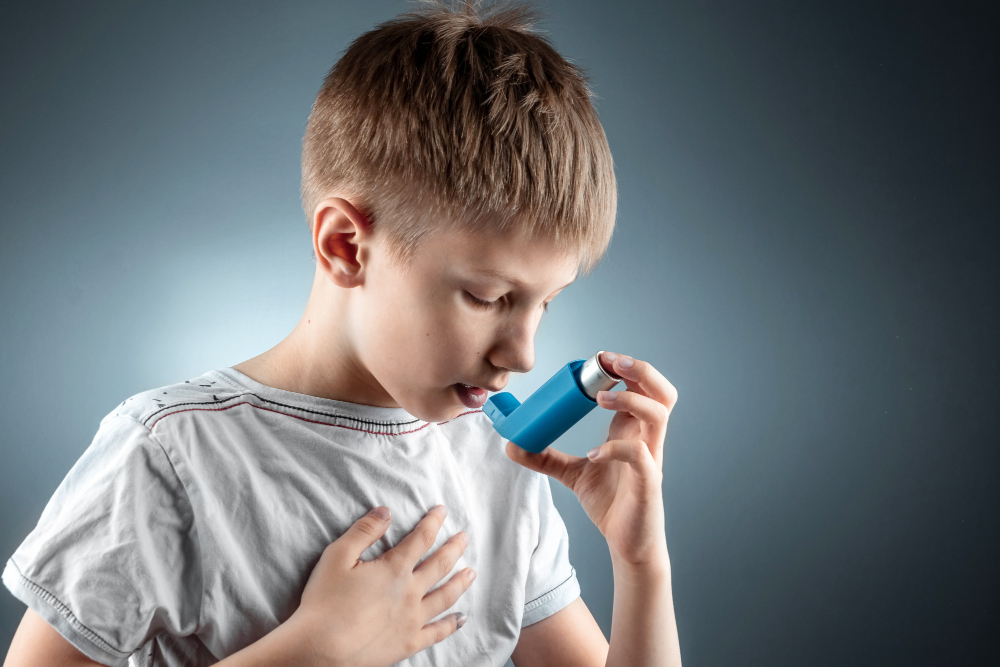Understanding childhood asthma symptoms is crucial for every parent. Immediate attention to these signs can change the game in dealing with asthma. From coughing to wheezing, every signal is a call for action. Early recognition and management directly impact a child’s daily life, helping them breathe easier and play better.
This guide is here to help you, as parents, understand what to look for. We aim to empower you with the knowledge to identify, manage, and minimize asthma’s impact on your child. With clear, actionable steps, parents can feel more confident and proactive. Knowledge is your first line of defense.
Our goal is simple: equip you to better handle your child’s asthma. Understanding it fully can help you act quickly, consult health professionals efficiently, and ensure your child enjoys a better quality of life.
Understanding Childhood Asthma in Context
Childhood asthma is a condition where the lungs become inflamed. This makes it harder for kids to breathe. It is a chronic issue, which means it doesn’t go away easily, and needs careful management.
Millions of children around the world suffer from asthma. It is especially common and can lead to many missed school days. Hospital visits are also a part of asthma’s impact on life. Parents might see their children struggle with simple activities because of it. The right treatment and management can significantly reduce these issues and help kids live a more normal life.
The prevalence of asthma in children is noteworthy. By understanding its presence, parents can better protect and guide their children.
Childhood asthma symptoms can differ from those in adults. While symptoms like coughing and shortness of breath are common, the severity and triggers might vary. For instance, adults might deal with symptoms often due to work or lifestyle factors, but children might react to specific allergens or a simple cold. Understanding this difference can help parents anticipate how asthma might progress as their child grows up.
Recognizing the nuances in children’s and adults’ asthma experiences can empower parents. Managing triggers in childhood might prevent more severe issues later. Knowledge about how asthma can develop over time is a big step in the right direction.
Recognizing and Responding to Symptoms and Triggers
Recognizing childhood asthma symptoms can be life-changing. Here’s what to watch for in your child:
- Coughing, especially at night or while they exercise.
- Wheezing, or a whistling sound when they breathe.
- Chest tightness or a feeling that the chest is squeezing.
These symptoms can vary in intensity. Some kids might show all these symptoms, while others might show just one. Additionally, there are several triggers that can worsen the condition.
Triggers are things that can cause an asthma attack. These include viral infections like colds, allergens such as pollen or pet hair, and pollutants from traffic or smoke.
Here’s how you can identify and minimize exposure to triggers:
- Keep a diary to track when symptoms appear.
- Note what your child was doing or around before a symptom started.
- Common Indian triggers include pollution – try to keep windows closed on high pollution days.
- Avoid exposing kids to smoke, be it from cigarettes or cooking.
By noting these details, parents can help doctors make a more accurate childhood asthma diagnosis.
Helping your child avoid these triggers is a proactive step towards minimizing asthma symptoms. It’s essential to create a safe environment for your child. Understanding these triggers better will also help manage childhood asthma prevention efforts, building healthier habits over time.
Proactive Management and Support Strategies
To manage childhood asthma symptoms effectively, staying on top of medical advice is crucial. Follow what doctors suggest and adhere to an asthma action plan specially made for your child. This includes knowing what medications to use daily and which ones to use during an asthma attack.
Keep an eye out for signs that need immediate attention:
- Difficult breathing or very fast breathing
- Lips or face turning blue
- Unable to speak in full sentences
These signs need quick medical help. Childhood asthma treatment often includes inhalers or nebulizers, and keeping these handy is important.
Supporting your child involves understanding their emotional needs. Encourage open chats about how they feel. Letting them know it’s normal to feel scared or upset helps them express their feelings. This openness at home provides them with emotional strength and security.
Caregivers play a vital role in managing childhood asthma. They should be informed about your child’s conditions. Grandparents and babysitters should know what to do if an asthma attack happens. It’s also helpful if schools are informed about your child’s asthma. This way, teachers know if your child needs to use their inhaler.
Building a network of support around your child fosters a nurturing environment. Empower those around them with the knowledge to act effectively.
In managing childhood asthma prevention, focus on regular check-ups and maintaining a routine. Informing yourself and those close to your child makes a world of difference in their journey with asthma.

